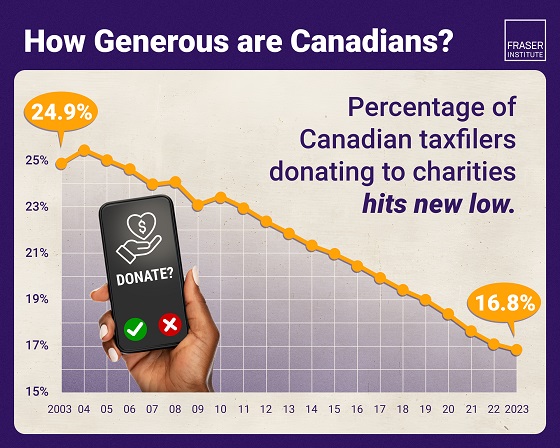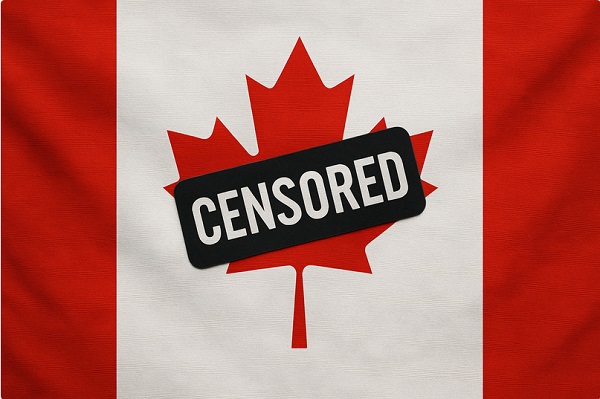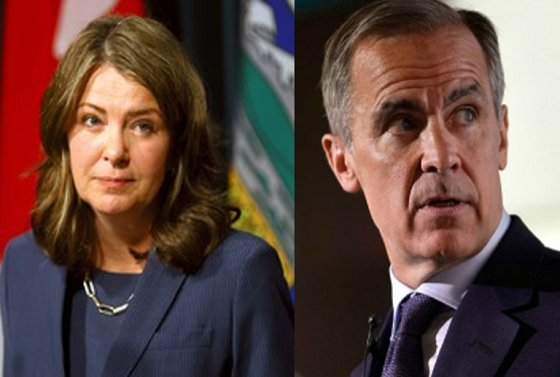Business
Pornhub hit with lawsuit over videos victimizing 12-year-old who was drugged and raped

From LifeSiteNews
There is a backlog of about five months between when a user reports a video and an authorized team leader reviews it to determine whether to remove it, allowing the video to remain available on the Pornhub site for download and redistribution for nearly a half year after the complaint was first reviewed.
A man who as a 12-year-old boy was drugged and raped in nearly two dozen videos that were uploaded to Pornhub by his victimizer for monetary gain is suing the massive online pornography leviathan for breaking child sex trafficking and RICO laws.
According to the world’s leading anti-porn activist Laila Mickelwait, “His jury trial could put Pornhub out of business.”
In recent years, scandal-plagued Pornhub — and its shadowy parent company, Mindgeek, which recently changed its name to “Aylo” to escape its “scandal-ridden smut empire” reputation — has come under fire for posting child sexual exploitation material, sexual trafficking, and assault videos and then ignoring victim’s pleas to remove the videos from their website.
The predator who admitted that in the summer of 2018 he used, induced, and enticed the young boy and another minor to engage in sexually explicit conduct for the purpose of producing video pornography is now behind bars serving a 40-year sentence for “sexual exploitation of a child, advertising child pornography, and distribution of child pornography.”
However, Mindgeek and Pornhub have yet to face their young accuser for enabling the public distribution of the videos.
According to the lawsuit, videos of the boy’s molestation “astonishingly” generated nearly 200,000 video views, and as a result of Mindgeek’s actions and/or inactions, the now-young man “has suffered incomprehensible past and present physical, emotional, and mental trauma.”
“MindGeek knows that there is a demand for CSAM (Child Sexual Abuse Material) on their sites and they cater to this demand,” according to the 78-page legal complaint filed in a U.S. District Court in Alabama where the sexual exploitation of the minors took place.
Hundreds of thousands of ‘teen’ sex video titles available
The case asserts that Mindgeek has historically sought to maximize profit, aggressively promoting child porn via titles and video descriptions that would more easily direct Google users to the exploitative videos featured on Pornhub.
“Many of the tags, categories, and search suggestions that have been created or edited by MindGeek facilitate users seeking easy access to child pornography, child sex trafficking, or any other form of child sexual abuse material, including that depicting” the then-12-year-old victim, cited in the complaint as CV1, in order to protect his identity.
“One such tag MindGeek used to classify pornographic content on its websites was ‘Teen.’ The suggested terms include ‘abused teen,’ ‘crying teen,’ ‘extra small petite teen,’ and ‘Middle School Girls,’” the legal complaint explains.
“In 2018, the word ‘teen’ was the seventh most searched term on all of Pornhub,” the complaint notes. “Other eponymous search terms, including ‘rape,’ ‘preteen,’ ‘pedophilia,’ ‘underage rape,’ and ‘extra small teens’ would call up videos depicting the same.”
The proliferation of these keywords and tags on the website ensures that when outside users Google these terms, Pornhub, or another MindGeek website, will be among the top results. This draws new users, even those searching the internet for illegal content, to MindGeek websites.
MindGeek’s aggressive data collection and traffic analytics mean that MindGeek knows exactly what users are looking for (and what exists) on their sites and that this includes sex trafficking material and CSAM.
For example, as The New York Times recently reported, as of December 4, 2020, a search for “girl under18” led to more than 100,000 videos. And a search for “14yo” led to more than 100,000 videos and “13yo” led to approximately 155,000 videos. MindGeek sought to capitalize on such traffic by allowing illegal search terms, creating suggested search terms, keywords, and tags
Purposefully failing to censor criminal child/teen porn videos
The case notes that while Mindgeek-Pornhub does have online moderators who review complaints about videos on the site, the 10 moderators “have no prior training, medical or otherwise, to identify whether someone depicted in a pornographic video is a child” and are, by design, set up to fail at their task.
The ten individuals on the “moderation/formatting team” were each tasked by MindGeek to review approximately 800-900 pornographic videos per 8-hour shift, or about 100 videos per hour. According to Pornhub, there are approximately 18,000 videos uploaded daily, with an average length of approximately 11 minutes per video. Hence, each moderator is tasked with reviewing approximately 1,100 minutes of video each hour. This is an impossible task, and MindGeek knows that.
To compensate for and accomplish the impossible task, moderators/formatters fast-forward and skip through videos, often with the sound turned down. The problem is not resources: MindGeek’s annual revenues are at least $500 million, and it could certainly hire and train more true moderators.
One of the most disturbing assertions in the case is that “When minor victims of sex trafficking and their representatives have contacted MindGeek to remove videos of them from its websites, MindGeek has refused to do so.”
In some cases, MindGeek moderators/formatters even looked at video comments, deleted those noting a video constituted child pornography or otherwise should be removed from the system, and left the video up.
The MindGeek moderators/formatters are discouraged from removing illegal content for particularly profitable users. Generally, when an uploader has a history of highly viewed content, the employees are only permitted to send warning letters about illegal or inappropriate content.
There is a backlog of about five months between when a user reports a video and an authorized team leader reviews it to determine whether to remove it, allowing the video to remain available on the Pornhub site for download and redistribution for nearly a half year after the complaint was first reviewed.
The videos that the boy’s victimizer uploaded to Pornhub bore “disturbing titles that clearly suggested the child depicted was a minor, including but not limited to: ‘(Had sex with) my Step Nephew’; ‘Taking Teen Virginity’; ‘My sweet little nephew.’ The other 20 video titles are too crude and obscene for LifeSiteNews to cite.
Despite those titles and the content of the videos, Mindgeek “never informed the authorities about the identity of the child sexual predator, the fact he posed child sexual violence, or the fact that child sexual violence was being utilized on their platforms for profit to their mutual benefit.”
At no time did the MindGeek Defendants attempt to verify CV1’s identity or age, inquire about their status as minor children, victims of sex trafficking, or otherwise use their platform to root out the trafficking of their images. Instead, the MindGeek Defendants continued to disseminate these images around the world for profit even after law enforcement informed the MindGeek Defendants the images contained child pornography.
‘Pornhub would rather stop doing business than prevent kids from watching porn’
Pornhub has now ceased operations in 12 states that have begun to require age verification in order to enter the porn sites: Texas, Utah, Arkansas, Virginia, Montana, North Carolina, Mississippi, Kentucky, Indiana, Idaho, Kansas, and Nebraska.
“The world’s biggest porn site would rather stop doing business than prevent kids from watching,” conservative commentator and author Michael Knowles noted earlier this year. “Quite telling!”
“Pornhub has decided that age verification laws damage their business model to such an extent that it is better for them to simply block entire states rather than comply with (age verification laws),” LifeSiteNews columnist Jonathon Van Maren wrote in January.
Despite the legal troubles, Pornhub racked up a total of 5.49 billion visits globally in May, and with over 1.1 billion visits in the U.S. was ranked 10th nationally for online traffic. It’s not unusual for the website to reach over 10 billion total global monthly visits.
Business
The world is no longer buying a transition to “something else” without defining what that is

From Resource Works
Even Bill Gates has shifted his stance, acknowledging that renewables alone can’t sustain a modern energy system — a reality still driving decisions in Canada.
You know the world has shifted when the New York Times, long a pulpit for hydrocarbon shame, starts publishing passages like this:
“Changes in policy matter, but the shift is also guided by the practical lessons that companies, governments and societies have learned about the difficulties in shifting from a world that runs on fossil fuels to something else.”
For years, the Times and much of the English-language press clung to a comfortable catechism: 100 per cent renewables were just around the corner, the end of hydrocarbons was preordained, and anyone who pointed to physics or economics was treated as some combination of backward, compromised or dangerous. But now the evidence has grown too big to ignore.
Across Europe, the retreat to energy realism is unmistakable. TotalEnergies is spending €5.1 billion on gas-fired plants in Britain, Italy, France, Ireland and the Netherlands because wind and solar can’t meet demand on their own. Shell is walking away from marquee offshore wind projects because the economics do not work. Italy and Greece are fast-tracking new gas development after years of prohibitions. Europe is rediscovering what modern economies require: firm, dispatchable power and secure domestic supply.
Meanwhile, Canada continues to tell itself a different story — and British Columbia most of all.
A new Fraser Institute study from Jock Finlayson and Karen Graham uses Statistics Canada’s own environmental goods and services and clean-tech accounts to quantify what Canada’s “clean economy” actually is, not what political speeches claim it could be.
The numbers are clear:
- The clean economy is 3.0–3.6 per cent of GDP.
- It accounts for about 2 per cent of employment.
- It has grown, but not faster than the economy overall.
- And its two largest components are hydroelectricity and waste management — mature legacy sectors, not shiny new clean-tech champions.
Despite $158 billion in federal “green” spending since 2014, Canada’s clean economy has not become the unstoppable engine of prosperity that policymakers have promised. Finlayson and Graham’s analysis casts serious doubt on the explosive-growth scenarios embraced by many politicians and commentators.
What’s striking is how mainstream this realism has become. Even Bill Gates, whose philanthropic footprint helped popularize much of the early clean-tech optimism, now says bluntly that the world had “no chance” of hitting its climate targets on the backs of renewables alone. His message is simple: the system is too big, the physics too hard, and the intermittency problem too unforgiving. Wind and solar will grow, but without firm power — nuclear, natural gas with carbon management, next-generation grid technologies — the transition collapses under its own weight. When the world’s most influential climate philanthropist says the story we’ve been sold isn’t technically possible, it should give policymakers pause.
And this is where the British Columbia story becomes astonishing.
It would be one thing if the result was dramatic reductions in emissions. The provincial government remains locked into the CleanBC architecture despite a record of consistently missed targets.
Since the staunchest defenders of CleanBC are not much bothered by the lack of meaningful GHG reductions, a reasonable person is left wondering whether there is some other motivation. Meanwhile, Victoria’s own numbers a couple of years ago projected an annual GDP hit of courtesy CleanBC of roughly $11 billion.
But here is the part that would make any objective analyst blink: when I recently flagged my interest in presenting my research to the CleanBC review panel, I discovered that the “reviewers” were, in fact, two of the key architects of the very program being reviewed. They were effectively asked to judge their own work.
You can imagine what they told us.
What I saw in that room was not an evidence-driven assessment of performance. It was a high-handed, fact-light defence of an ideological commitment. When we presented data showing that doctrinaire renewables-only thinking was failing both the economy and the environment, the reception was dismissive and incurious. It was the opposite of what a serious policy review looks like.
Meanwhile our hydro-based electricity system is facing historic challenges: long term droughts, soaring demand, unanswered questions about how growth will be powered especially in the crucial Northwest BC region, and continuing insistence that providers of reliable and relatively clean natural gas are to be frustrated at every turn.
Elsewhere, the price of change increasingly includes being able to explain how you were going to accomplish the things that you promise.
And yes — in some places it will take time for the tide of energy unreality to recede. But that doesn’t mean we shouldn’t be improving our systems, reducing emissions, and investing in technologies that genuinely work. It simply means we must stop pretending politics can overrule physics.
Europe has learned this lesson the hard way. Global energy companies are reorganizing around a 50-50 world of firm natural gas and renewables — the model many experts have been signalling for years. Even the New York Times now describes this shift with a note of astonishment.
British Columbia, meanwhile, remains committed to its own storyline even as the ground shifts beneath it. This isn’t about who wins the argument — it’s about government staying locked on its most basic duty: safeguarding the incomes and stability of the families who depend on a functioning energy system.
Resource Works News
Business
High-speed rail between Toronto and Quebec City a costly boondoggle for Canadian taxpayers

“It’s a good a bet that high-speed rail between Toronto and Quebec City isn’t even among the top 1,000 priorities for most Canadians.”
The Canadian Taxpayers Federation is criticizing Prime Minister Mark Carney for borrowing billions more for high-speed rail between Toronto and Quebec City.
“Canadians need help paying for basics, they don’t need another massive bill from the government for a project that only benefits one corner of the country,” said Franco Terrazzano, CTF Federal Director. “It’s a good a bet that high-speed rail between Toronto and Quebec City isn’t even among the top 1,000 priorities for most Canadians.
“High-speed rail will be another costly taxpayer boondoggle.”
The federal government announced today that the first portion of the high-speed rail line will be built between Ottawa and Montreal with constructing starting in 2029. The entire high-speed rail line is expected to go between Toronto and Quebec City.
The federal Crown corporation tasked with overseeing the project “estimated that the full line will cost between $60 billion and $90 billion, which would be funded by a mix of government money and private investment,” the Globe and Mail reported.
The government already owns a railway company, VIA Rail. The government gave VIA Rail $1.9 billion over the last five years to cover its operating losses, according to the Crown corporation’s annual report.
The federal government is borrowing about $78 billion this year. The federal debt will reach $1.35 trillion by the end of this year. Debt interest charges will cost taxpayers $55.6 billion this year, which is more than the federal government will send to the provinces in health transfers ($54.7 billion) or collect through the GST ($54.4 billion).
“The government is up to its eyeballs in debt and is already spending hundreds of millions of dollars bailing out its current train company, the last thing taxpayers need is to pay higher debt interest charges for a new government train boondoggle,” Terrazzano said. “Instead of borrowing billions more for pet projects, Carney needs to focus on making life more affordable and paying down the debt.”
-

 Business2 days ago
Business2 days agoAlbertans give most on average but Canadian generosity hits lowest point in 20 years
-

 Bruce Dowbiggin2 days ago
Bruce Dowbiggin2 days agoCarney Hears A Who: Here Comes The Grinch
-

 Censorship Industrial Complex2 days ago
Censorship Industrial Complex2 days agoOttawa’s New Hate Law Goes Too Far
-

 Business2 days ago
Business2 days agoTaxpayers Federation calls on politicians to reject funding for new Ottawa Senators arena
-

 National2 days ago
National2 days agoCanada’s free speech record is cracking under pressure
-

 Fraser Institute1 day ago
Fraser Institute1 day agoClaims about ‘unmarked graves’ don’t withstand scrutiny
-

 Digital ID1 day ago
Digital ID1 day agoCanada considers creating national ID system using digital passports for domestic use
-

 Energy1 day ago
Energy1 day agoMeet REEF — the massive new export engine Canadians have never heard of







